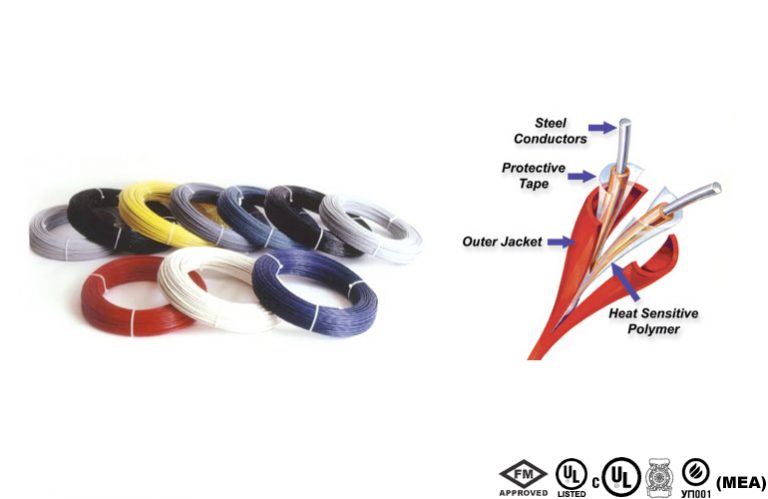Linear Heat Detectors are cables that detect heat along their entire length. The sensor of this cable consists of two strands of steel conductors that are separately placed in a heat-sensitive polymer coating. These two conductors, which are twisted together and create a spring pressure inside themselves and towards each other, are covered with a resistant wrapper and are placed inside a shell resistant to the environmental conditions of the cable installation site.

The way these sensors function as constant temperature detectors is that at a specific temperature to which the thermal polymer is sensitive, these polymers are melted and due to the existing spring pressure, the two conductor strings will be connected to each other as a result of the identification signal. Heat is sent. This happens at the first point where heat is generated, and there is no need to contact a certain length of the cable with heat in order to identify it, which is one of the advantages of Protectowire cables.

Video of how LHD detector works
Other advantages of these heat detectors
- The ability to accurately determine the point of heat generation using Protectowire control panels
- No change in cable sensitivity due to changing environmental conditions and no need to readjust the equipment
- High mechanical resistance of the cable due to the use of steel conductor and resistant cable shell
- The possibility of coordinating with other fire alarm equipment in the circuit, such as fire alarms, smoke, and heat detectors
- Covering different temperatures and the possibility of installation in different parts of the project
- Suitable for use as an activator of fire extinguishing equipment, such as Delage valve and foam system, etc.
Suitable for installation in various parts of industrial projects such as
- cable tray
- Conveyor belts
- Power distribution equipment such as transformers, electrical switches, etc.
- cooling towers
- mines
- pipelines
- Cold storages
- Oil and gas tanks and chemicals
